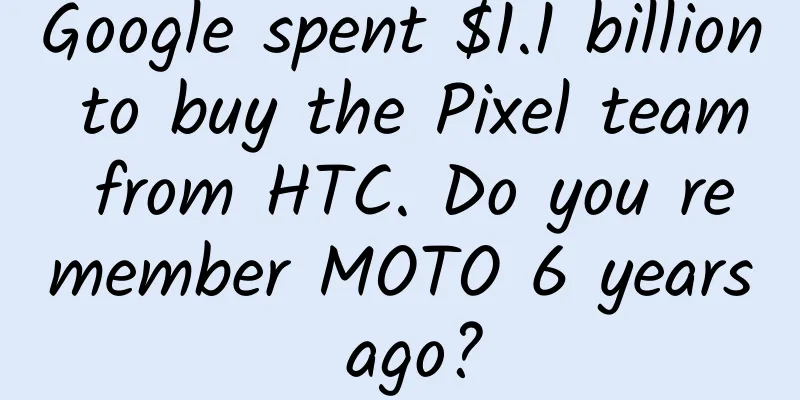Traditional TV industry changes and seeks help from Internet targeted advertising

|
The TV market is fragmented, and the main selling point of TV that attracts advertisers, that is, its ability to spread to the mass market, has been destroyed, and its ability to generate advertising revenue has declined. However, with the help of technology, it can also learn from the Internet and use finely customized targeted advertising to reverse the decline. Money follows eyeballs. This fundamental principle of media advertising is increasingly working against the television industry today as new viewing models challenge old business models. The latest evidence came in August, when big media companies reported weak TV ad revenues. Madison Avenue had been noticing for some time, and as Wall Street saw the warning signs, shares of companies including Disney , 21st Century Fox , Viacom and CBS suffered. "The traditional TV model is breaking down," said Laura Desmond, chief executive of Starcom MediaVest, one of the world's largest ad-buying companies. "It's both a crisis and a huge opportunity." Both the crisis and the hope are byproducts of television’s transformation into a truly digital medium. Internet services like Netflix and YouTube deliver video programming to screens big and small in living rooms and smartphones, and do so “over the top,” an industry term for delivery over the Internet, bypassing the TV industry’s customary control point, the set-top box. In addition, digital video services now offered by cable and satellite operators allow programs to be recorded and watched later. The television market is fragmenting and becoming increasingly unpredictable, undermining traditional TV’s main appeal to advertisers: its ability to reach mass-market audiences. However, as television began to embrace digital technology, it also opened the door to unprecedented targeted television advertising, much like online advertising today. It helps explain why video ads on streaming services like Google , YouTube, Facebook and Hulu are soaring, because the rules of Internet targeting apply to those platforms. Revenue from these online video ads is currently only one-tenth of the $70 billion in annual TV advertising, but is expected to grow 21% annually, according to Forrester Research. Advertising on cable and broadcast TV, by contrast, is expected to grow only a modest 1% annually. Until recently, the information advertisers used about TV viewers came primarily from sample surveys of the audience conducted by Nielsen and other market research companies. Digital technology promises far more detailed monitoring, down to the household level, covering not only what is watched but also when it is watched, and, when combined with other data sources, predicting behavioral and purchasing habits. “The internet set an example of what could be done,” said Shereta Williams , president of Video, an ad-tech startup owned by The Cox Media Group. “But now, TV can do the same thing.” This technology is still in its early stages in the digital TV industry. The TV industry hopes that advertising targeting can be accurate to every household and every person, just like the Internet, but at the same time, it does not lose control of the distribution network and business network. The set-top box has long been the technical gateway to television, and the technology is getting a digital upgrade that gives it internet-like targeting capabilities. Today, nearly 40 million set-top boxes, including those from satellite and cable TV service providers, are "home-targetable," representing about a third of U.S. households. This should mean more effective advertising for advertisers, and the ability to scientifically test the effectiveness of advertising. Last year, Starcom Media ran an addressable TV advertising campaign for Honda's Acura TLX luxury car. The company combined anonymized sales and other data to select 1.7 million households to play the Acura ads. The rate at which these households bought the car was 60% higher than a control group with similar demographic characteristics that did not see the ads. With advanced software and data mining, it is possible to customize ads to a very sophisticated level. For example, two families living in two apartments next to each other in New York may watch the same American TV series, such as "The Good Wife," but see different ads. A couple living in one apartment donates to environmental causes and has no children, and the ads they see may be compact cars. A couple living in the other apartment has two children and a weekend house, and the ads they see may be an SUV. The future of TV advertising may look more like online advertising today, but analysts and TV industry executives insist it won't be just a repeat of online advertising. Some newspaper and magazine publishers have built sizable digital advertising businesses online. But it turns out that this is a winner-takes-all market, with the biggest winners being Internet advertising giants such as Google and Facebook. “TV will have some of the characteristics of internet advertising in terms of being able to target people behind the screen using data to predict who is behind the screen,” said James Nail, an analyst at Forrester Research. “But video sellers will have far more power in determining how this new technology spreads.” On traditional TV, big consumer brands and product advertisers want their ads to run alongside high-quality video programming, primarily the sitcoms and TV series that the medium is famous for, analysts and executives say. They say the sights, sounds and emotions that come with that video environment drive decisions. “One of the big differences between TV and the internet is that quality content is scarce,” said Scott Ferber, chief executive of Videology, an ad-tech start-up. Big media companies have used scarcity to stave off competition in the past. In 2012, Google shut down its Google TV Ads unit after it struggled to transfer its Internet marketplace model to selling TV ads. Analysts said TV networks and local stations resisted putting their inventory on Google’s marketplace. Today, Google is pursuing its vision of Internet-style advertising, known as programmatic TV, but with a calibrated approach, portraying itself as a maker of tools to help content providers and marketers. Google’s role is to “bring data-driven buying and automation to TV and video ad buying,” said Rany Ng, director of product management for video ads. In recent years, there has been a proliferation of video ad tech startups, particularly those that specialize in working with large media companies or ad buyers, providing software expertise and consulting services, often connecting buyers and sellers. “This is very much at the heart of the strategy of producers and marketers,” said Bill Day, chief executive of Tremor Video, an ad-tech startup. “Over time, they’re going to want more control.” The key to finely customized advertising is data, so data brokers and data analysis companies, including Acxiom , Experian and Dunnhumby, are also suppliers to the emerging digital TV industry. Acxiom, for example, has demographic, shopping and lifestyle information on every household in the U.S. Rick Erwin, general manager of audience solutions at Acxiom, sees digital TV as another market for his company's targeted services, which are already used in direct mail, television marketing, e-mail and online advertising. “Whenever a media outlet has addressable capabilities down to the household level, we become data fuel,” he said. The long-term goal of advertisers is to enable their products to reach their ideal customers on any screen. But analysts and industry executives agree that it is not certain who will win in this high-tech, high-risk migration to digital television. For example, Starcom Media CEO Desmond predicts that the media industry will see a painful consolidation in the next three years. Desmond said that acquirers are likely to include Internet giants such as Google and Facebook. Even those who insist that the TV market is unique have their concerns. “It should be different,” said Faber, CEO of Videology, an ad technology startup. “But these digital companies are so big and so powerful that it’s hard to resist them.” As a winner of Toutiao's Qingyun Plan and Baijiahao's Bai+ Plan, the 2019 Baidu Digital Author of the Year, the Baijiahao's Most Popular Author in the Technology Field, the 2019 Sogou Technology and Culture Author, and the 2021 Baijiahao Quarterly Influential Creator, he has won many awards, including the 2013 Sohu Best Industry Media Person, the 2015 China New Media Entrepreneurship Competition Beijing Third Place, the 2015 Guangmang Experience Award, the 2015 China New Media Entrepreneurship Competition Finals Third Place, and the 2018 Baidu Dynamic Annual Powerful Celebrity. |
<<: SMMT: UK new car registrations fell by about 25% year-on-year in October 2021
Recommend
7 ways to help you correctly understand and improve user retention
After discussing the two major issues of attracti...
The "Food Compass" is here! No more worries about eating?
Chinese people pay great attention to diet therap...
On the fourth day of the first lunar month, when you welcome the gods and receive blessings, do these 4 things and happiness, wealth, longevity and joy will come to you!
The fourth day of the first lunar month is not on...
How were games developed 20 years ago?
[[145405]] Someone asked on Zhihu: "There ar...
How hard have scientists tried to "sneak a peek" at those fat black and white guys?
On March 18, 1978, the Wolong Nature Reserve, the...
Where did the budget go? How to define new users of investment and financial management?
I don’t know whether you readers usually look at ...
Times Weekly: In February 2024, the national second-hand car market transaction volume decreased by 28.83% month-on-month and 17.63% year-on-year
"Boss, are you selling a car? We're buyi...
There are no marketing masters in the brand wave
Every once in a while, the popular marketing meth...
How would you let Uber do this? Google's patent for driverless ride-hailing is exposed
A lot of big news comes from patents. From 2009 t...
Internet giants compete to become digital music tycoons
There is a joke in the Internet field: No one exp...
The indestructible cockroach turns into a "cyborg cockroach"? Please allow me to respectfully call him Brother Qiang
Cockroaches, commonly known as "xiaoqiang&qu...
How to do marketing promotion? 2 key points!
“My product is super good…” “Great, great…” “My p...
Distribution mini program mall, what are the functions and advantages of WeChat mini program distribution function?
Usually, if stores want to attract a highly stick...
Why does eating dumplings raise blood sugar so quickly? Six ways to eat dumplings safely
Dumplings seem to contain meat and vegetables, bo...
Why do deep space probes circle before reaching their destination?
According to foreign media reports, the BepiColom...









